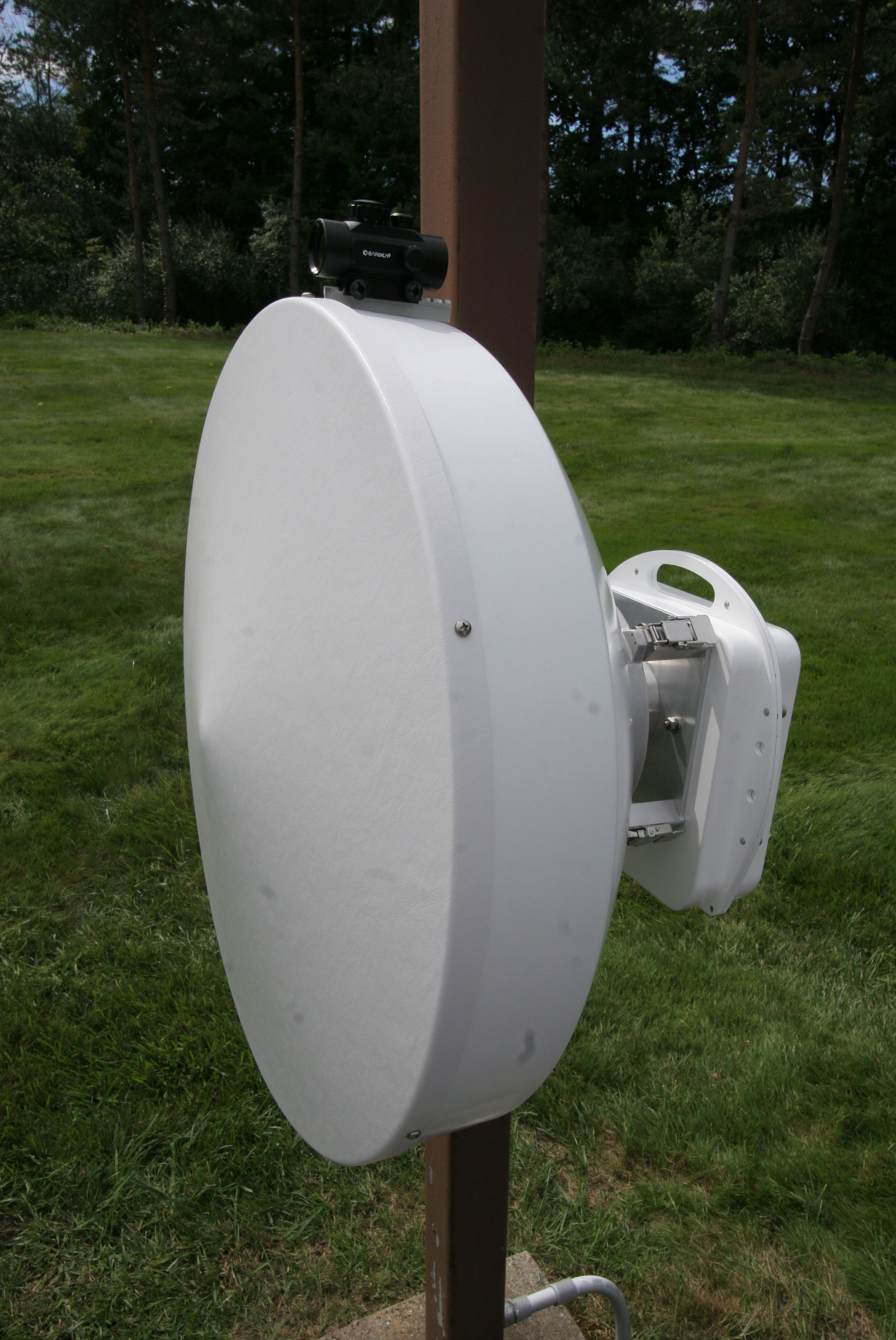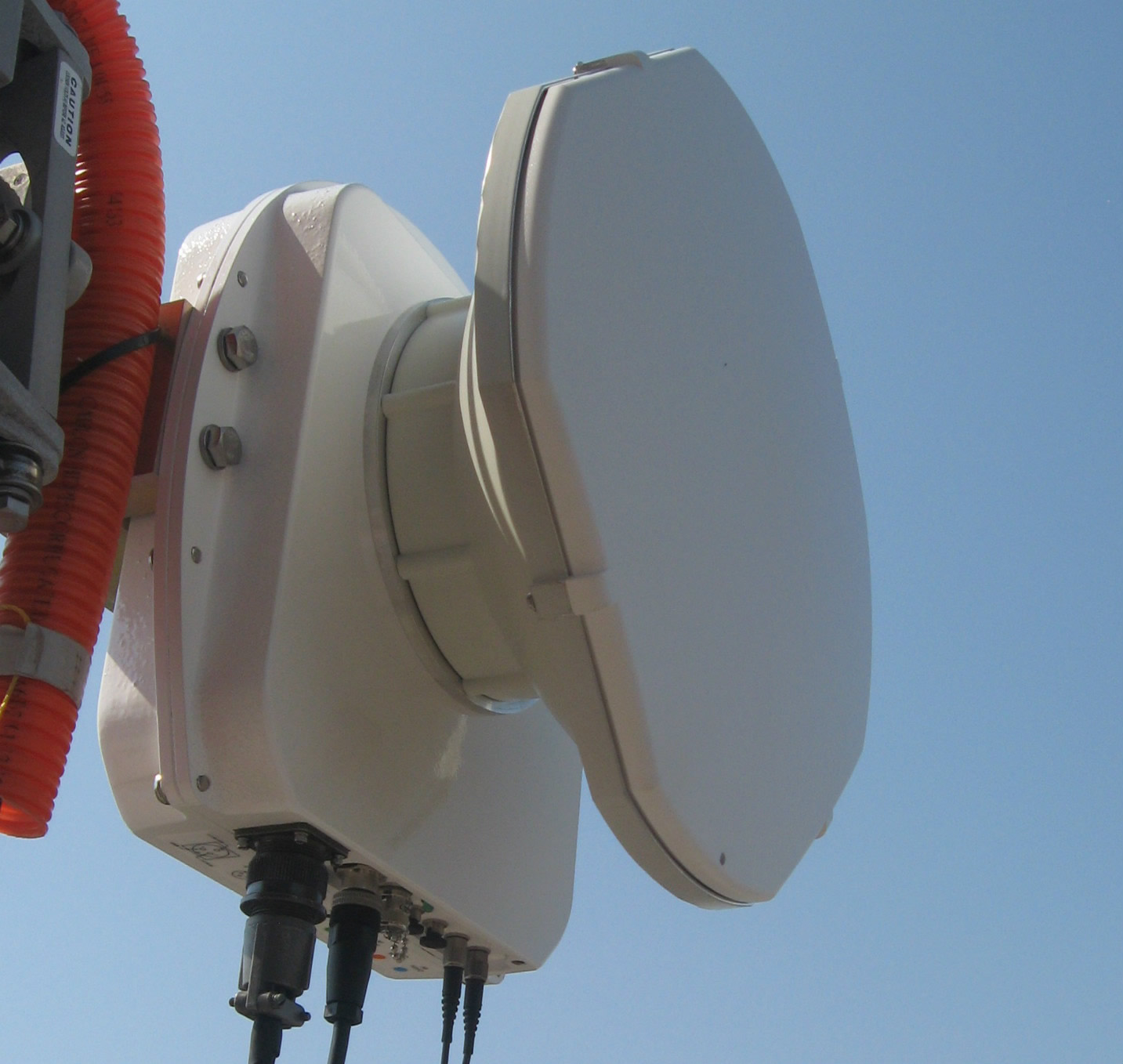Riding on the back of millimetre waves
Of all the wavelengths in the spectrum used for wireless data transmission, perhaps the least well known is the millimetre wave band. However, it is precisely this band (and the continuous bandwidth it provides) that enables wireless data transmission at speeds and bandwidth that compare to the high quality of fibre optic communication systems.
Millimetre waves (30-300GHz) are a subset of the microwave band, which is itself part of the larger radio wave spectrum. These waves derive their name from the size of the wavelength, which measures from one to ten millimetres.
Unlike low frequency radio signals, millimetre waves are not appropriate for long distance transmissions through the atmosphere, due to higher signal loss. Instead, millimetre wave radios typically operate over distances of several kilometres using highly directional, ‘pencil’ thin beams that also help prevent interference.
It is this characteristic, along with continuous bandwidth not available at more commonly used lower frequencies, that makes millimetre wave technology the ideal solution for point-to-point, high speed, high bandwidth wireless.
The technology, available as commercial transmitter/receiver units that operate at Gbit/s speed, is already being utilised in multi-billion dollar markets such as cellular communications for the next generation of micro and picocell towers, High Definition/3D digital video for broadcasting organisations and the motion picture industry, and for High Frequency Trading on Wall Street.
The millimetre wave
In spite of the relative anonymity of millimetre wave (MMW) radios in the commercial area, the MMW spectrum has been utilised for military satellite-satellite communications for decades.
Due to the recent and dramatic reduction in costs for MMW ICs (a trend that is expected to continue), the technology is now being increasingly utilised for commercial applications.
The incredible promise of MMW, however, has as much to do with the Federal Communications Commission (FCC) as any other factor.
The FCC was formed by the Communications Act of 1934. As part of its mandate, the FCC allocates specific wavelength frequencies for everything from FM/AM radio stations to television, cell phones, satellites, aeronautics and the military, to name a few. However, with the explosion of wireless applications, most are jammed into small bands at lower frequencies of the radio spectrum.
Although the millimetre wave band is also regulated by the FCC, if the more crowded bands can be compared to the population per square foot of Manhattan, New York, then the wide open expanses available to millimetre waves are more like Yellowstone National Park.
This extra space is critical because it provides the ‘continuous bandwidth’ required for high bandwidth, high speed data transmission. Without it, lower frequency products (despite being capable of such speeds were it not for its neighbours) are hitting a glass ceiling that even refinements and improvements in wireless technology cannot overcome.
Lower frequency allocations, for example, are typically 2-5MHz. In the millimetre wave spectrum the total allocation potential is up to 250GHz, with 5, 7, 10, 15, even 20GHz of continuous bandwidth available. With so much room to work with, practical data rates in the millimetre band top out above 40Gbit/s.
Wireless for next generation cellular
The highly directional characteristic of millimetre waves is ideally suited to cellular communications, particularly in crowded urban environments. In a market that analysts estimate will exceed $5 billion by 2015, the installation of small base stations called micro and picocells is expected to outnumber traditional cell towers by as much as 20 to one.

Micro and picocells cover only a limited area, but require less power, cost less and have a much smaller footprint than larger ‘macro’ cell towers. This makes them ideal for indoor locations such as entertainment venues, malls, airports, train stations, office buildings and hotels.
But the advent of next generation cellular networks is creating a new backhaul connectivity problem: how to connect the growing number of smaller base stations to the core, either through wired or wireless connections.
This is exacerbated by concerns over frequency congestion and interference in dense cell deployments where 4 or more picocells could be mounted on light poles in a single parking lot or on a rooftop.
The most obvious solution for high speed transmission of data-intensive content would be to establish a physical connection using fibre optic cabling. However, the cost and challenge of implementing fibre to each micro or picocell site is prohibitive, particularly in urban areas where streets and sidewalks cannot easily be trenched.
As a result, outdoor, ‘fibre optic quality’ wireless millimetre products are currently being considered by providers. With typical link distances for picocell backhaul estimated at a few hundred metres between sites, and microcells less than two kilometres, millimetre wave products are ideally suited for such applications.
If you can’t run fibre optic cabling, millimetre wave wireless is the fastest, quickest, smallest and least expensive solution, according to Wayne Pleasant, former Chairman of the Wireless Communication Industry Association (WCIA) committee charged with helping the FCC establish guidelines for the 80 Gigahertz light licensed millimetre wave band.
Pleasant believes that in many key ways millimetre wave devices can be more reliable and even faster than fibre optics as, due to a reduction in latency, transmission speed is improved.
Millimetre wave radios require only very small antennas, measured in inches rather than feet for Wi-Fi and other wireless options. This addresses the concern over potential ‘visual pollution’ caused when mounting a large quantity of such products to light poles, billboards, or sides of buildings.
Narrow beam antennas allow systems in these bands to be engineered in close proximity to one another without causing interference. Since a greater number of highly directive antennas can be placed in a given area, the net result is higher reuse of the spectrum, and higher density of potential users.
In anticipation of the coming micro and picocell boom, Renaissance Electronics and Communications and its wholly owned subsidiary, HXI, recently released several millimetre wave radio products for this market. Since 1991, REC/HXI has provided RF, Microwave and Millimetre Wave components, sub-assemblies, integrated assemblies and sub-systems for military and commercial applications.
The company’s GigaLink Light Speed radios were the first millimetre wave radios in the 60GHz and 70GHz band to achieve FCC certification for unlicensed and light licensed commercial applications. These millimetre wave transmitter/receiver units have a full duplex throughput of 1.25Gbit/s and higher, offering plenty of bandwidth.
These radio links are designed to minimise latency, or lags in data transmission, which is critical to the next generation of data centric devices that must accommodate Voice over IP (VoIP), live digital streaming, large file downloads and video conferencing through mobile handsets.
Wireless for digital video
High speed, high bandwidth wireless that can transmit uncompressed high definition (HD) video signals and even High Def 3D is required to place digital video cameras in remote locations without wires and without concern for interference.
The motion picture, television, sports, and Electronic News Gathering (ENG) organisations have struggled for some time to identify wireless and even physical cabling connections that can keep up with the rapidly increasing bandwidth required for high definition and 3D filming.

Because 3D is shot essentially utilising two cameras that film slightly offset images that are synchronised to create the dimensional effect, two independent HD streams must be transmitted simultaneously. This immediately doubles the data transmission requirement and presents the challenge of doing so through a delivery system - physical or wireless - that has no latency issues.
Digital 3D/HD fibre optic cable has significant latency issues that can affect the synchronisation of the two digital streams of data. To compensate, complex and expensive multiplexers are required, which lead to racks of equipment on-site and a completely non-portable solution.
Due to the deficiencies of fibre optic cable, the industry often utilises a coax cable solution that can be run to a distance of approximately 300 metres. However, the limitations of data transmission often lead to stepping down the resolution and sacrificing quality.
To meet this need Renaissance/HXI introduced a millimetre wave based product specifically designed for high definition and 3D digital filming, the GigaLink HD wireless radio links. These wireless radio links, available as single or dual channel, are the first unlicensed wireless system that transmits uncompressed raw HD/SDI video at 1.485GB/s.
The GigaLink Products transmit up to 500 metres in clear air conditions and were developed specifically for use with Sony HDC and HDCU-F950 Digital 4:4:4 CineAlta systems but will interface with any SMPTE 372M or SMPTE 292M compliant production system.
The dual channel model can transport independent, uncompressed video signals from two HD cameras or alternately High Definition 3D with both 3D/HD input signals transported in perfect synchronisation at 2.970Gbit/s (combined). This is all without the need for compression or forward error correction, avoiding the associated latency.


